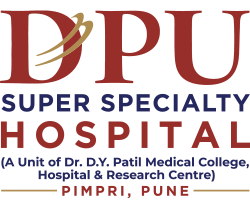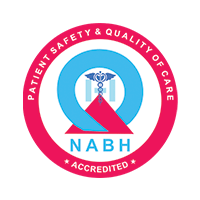Indian Diet Chart After Angioplasty

An angioplasty procedure to open a clogged artery can be a huge wake-up call for many people who want to improve their heart health. If this describes you, now is the time to make a lifestyle adjustment, with a heart-healthy diet being a top priority.
Making changes to your diet isn't simply about improving your general health. Following a proper and balanced diet as part of your heart disease treatment plan after angioplasty can reduce your risk of a future cardiac problem, such as a heart attack, by up to 73 percent. Eating certain healthy foods can aid in lowering cholesterol, reducing blood pressure, and achieving or maintaining a healthy body weight.
On a higher level, the suggested serving size for fruits and vegetables is 2-3 portions of fruits and 4-6 portions of veggies per day. Fruits and vegetables in their natural state should be served to angioplasty patients instead of juices, seasonings, and garnishes, which all add calories.
What is Angioplasty?
"Angioplasty", in simple terms means, opening up a clogged artery and is also known as Percutaneous coronary intervention, or PCI.
Angioplasty is a common treatment for heart attacks and coronary artery disease (CAD). Read the below-detailed blog to discover all the nuances of Angioplasty.
How Diet and Heart Health is Related?
Diet plays a significant role in the development of coronary artery disease. Obesity, high blood pressure, uncontrolled diabetes, and a saturated fat-rich diet are all food-related risk factors. A diet high in fiber, low in saturated fat, and high in plant foods can significantly lower the risk of heart disease.
A balanced diet can also help you avoid getting coronary artery disease, assist in losing weight, and lower your risk of diabetes and high blood pressure. It minimizes your cholesterol and lowers the risk of certain malignancies. A balanced diet can improve your heart even if you already have a cardiac issue!
In today’s time, stressed-out individuals usually resort to food to cope with their emotions. This is common, but it's even more crucial when you're depressed to nourish your body and mind with nutritious, feel-good foods. This isn't always the most convenient or appealing solution, but it will ultimately make you feel a lot better.
Indian Diet After Angioplasty - Foods to Consume
A well-balanced diet should be a goal for everyone. Crash diets may not give you the nutritional balance you require but instead, drain your body, causing a delay in recovery.
The best way to grasp it is to consider foods in terms of food groupings. Eat a variety of fruits and vegetables, as well as starchy meals like bread, rice, and potatoes.
When possible, choose foods that are lower in fat, salt, and sugar. This ensures the proper functioning of your body, keeping all the chances of complications at bay.
Some of the most sought-after food types needed by your body post your Angioplasty treatment includes:
Dry Fruits & Nuts
Nuts and seeds are a calorie-dense snack that is good for your heart. As a result, they're known as a "mini powerhouse" of fibre, proteins, vitamins, minerals, antioxidants, and vital fats.
Daily consumption of a handful of almonds (soaked overnight) is recommended by experts. Here's how different nuts contribute to the general wellness of the body (including the heart):
- Almonds: Calcium and Vitamin E-rich.
- Cashews are a good source of zinc, iron, and magnesium.
- Walnuts are high in antioxidants and omega-3 fatty acids.
- Manganese, phosphorus, copper, and vitamin B6 are all abundant in pistachios.
Vegetables and Fruits
A healthy diet should include at least 5 servings of fruits and vegetables every day. Try to consume a variety of fresh fruits and vegetables. Pure unsweetened fruit juice, lentils, and beans all count as a portion, but they can only qualify for one of your five a day, no matter how much you consume in one sitting.
Fresh fruits such as pears, apples, citrus fruits, and fresh vegetables such as salads are recommended. A suggestive breakdown of your daily portion can include 4 florets of broccoli/cauliflower, 1 pear, carrots, and close to 7-8 strawberries. This provides you with the much-needed nutrients and boosts your healing.
Unsaturated fats
It's critical to choose the correct kind of fats for your heart's wellness. So you must follow some tips to maintain your heart health. Saturated fats should be replaced by mono and polyunsaturated fats in minimal doses. Make sure to reduce your intake of trans-fat-containing foods.
It is also crucial to note that all fats and oils contain a lot of calories, therefore even unsaturated fats should be used sparingly. This will ensure that your body has enough strength to cope with the energy loss during the treatment.
Monounsaturated fats (such as olive oil, rapeseed oil, almonds, and unsalted cashews) and polyunsaturated fats (such as sunflower oil and vegetable oil, walnuts, sunflower seeds, and fatty fish) are healthier alternatives. You can increase the number of unsaturated fats consumed in your day and balance the diet well.
Indian Diet after Angioplasty – Foods to Avoid
While you are in your recovery phase, certain food items can trigger your system and cause an issue. It is advised to follow a proper diet after your Angioplasty and be mindful of what you consume throughout the day.
Here are a few foods that should be completely avoided when you are healing after angioplasty:
Saturated fats
As a practice, you must avoid foods that are rich in fats. This helps your body to stay away from toxins that interfere with your heart’s functioning.
Too much saturated fat in the blood can raise cholesterol levels, increasing the risk of coronary heart disease. This should only be consumed in limited quantities, as per your body’s requirement.
Trans fats
Trans fat, a different form of fat, can likewise boost cholesterol levels in the blood. Try avoiding trans fat, especially when you are healing after an Angioplasty. Strike off sugar-rich or sweetened foods completely from your diet to ensure a speedy recovery.
Salt & Spicy Foods
Excessive salt consumption raises the risk of high blood pressure. High blood pressure raises your chances of getting coronary artery disease. Minimize or give up salt-rich foods when you are healing.
Avoid spicy foods and fried dishes that contain a lot of oil. This can stress out the activities of your heart and slow down its entire working.
Alcohol
If you drink alcohol, whether daily, once or twice a week, or maybe rarely, it's critical to stick to the prescribed guidelines. You must also reduce your caffeine intake and abstain from all alcoholic beverages during the few initial days post your treatment.
The Bottomline
Even though angioplasty is a common, minimally invasive surgery that is extremely effective to treat blocked arteries; that’s not the end of the story! You must be mindful of your diet after the treatment which plays a vital role in your recovery phase.
Get The Most Effective Angioplasty Treatment With DPU Hospital, Pimpri, Pune
It is integral to look after your health and take the necessary steps at the right time to yield the best results. We at DPU Hospital, Pimpri, Pune provide the best-in-class healthcare treatments and facilities to ensure your perfect health.
Connect with us today and get started! Visit Best Cardiac Hospital in Pimpri, Pune to explore more about us. Give us a call at 020-27805100 to request your appointment.








